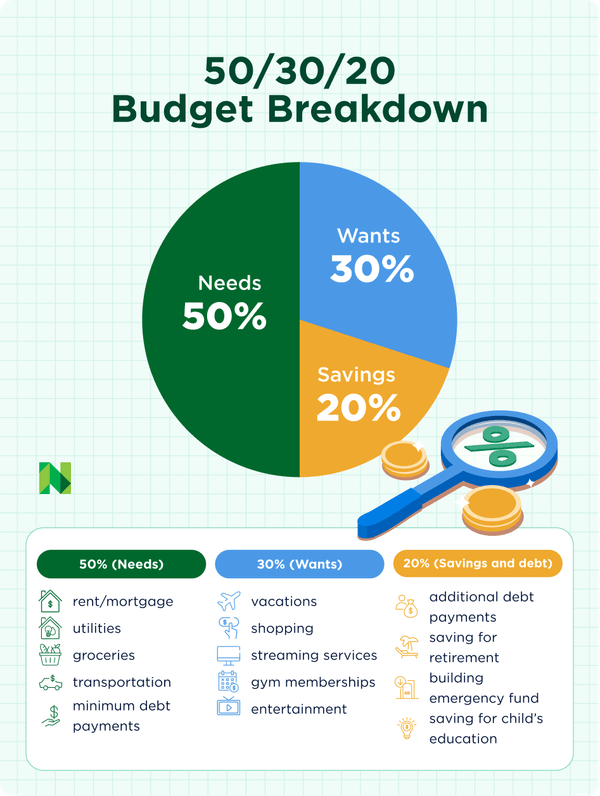50/30/20 Budget Calculator
Enter your monthly after-tax income into this free budget calculator to create a budget.
Many, or all, of the products featured on this page are from our advertising partners who compensate us when you take certain actions on our website or click to take an action on their website. However, this does not influence our evaluations. Our opinions are our own. Here is a list of our partners and here's how we make money.
The budget calculator below shows how your income could be split using the 50/30/20 rule.
This budgeting method divides your monthly income among three main categories: 50% for needs, 30% for wants and 20% for savings and debt repayment.
Before using this calculator, figure out your net income, which is the money that goes into your bank account after taxes and deductions.
Input that number in the budget calculator to see how to divide your money into the three main categories.
Let’s get started.
What is the 50/30/20 rule?
The 50/30/20 rule is a popular budgeting framework that divides your net income into three categories: 50% for needs, 30% for wants and 20% for savings and debt repayment.
Think of the 50/30/20 rule as an ideal to work toward, as a way to cover your needs, manage debt, indulge occasionally and save enough to pay for unexpected expenses and retirement.
Here’s a breakdown of each budget category and what kinds of expenses might fit into each group:

The percentages in the 50/30/20 rule can be changed to fit your financial circumstances. If saving or paying down debt is a priority, for example, it’s OK to shrink your wants bucket and increase the savings and debt bucket.
If the 50/30/20 rule doesn’t work for you, there are other budgeting systems you can explore.
Dive deeper with your monthly budget
For more budgeting advice, including how to prioritize your savings and debt repayment, review our tips for how to budget.
Not sure how to start budgeting? Downloading a budget app or personal finance software may help, or get informed with a budgeting book.
Stress less. Track more.
See the full picture: savings, debt, investments and more. Smarter money moves start in our app.
Article sources
NerdWallet writers are subject matter authorities who use primary,
trustworthy sources to inform their work, including peer-reviewed
studies, government websites, academic research and interviews with
industry experts. All content is fact-checked for accuracy, timeliness
and relevance. You can learn more about NerdWallet's high
standards for journalism by reading our
editorial guidelines.
Related articles








